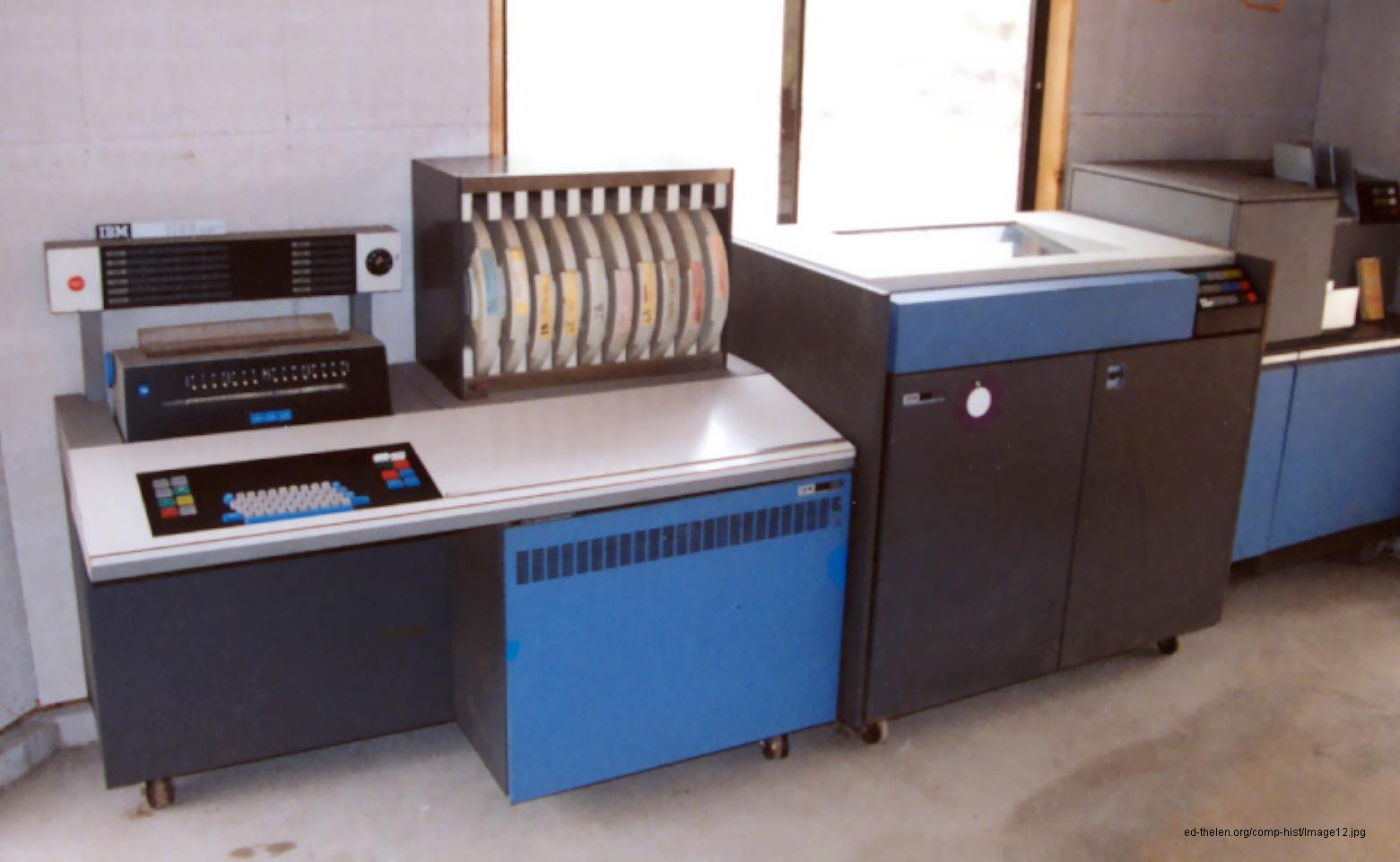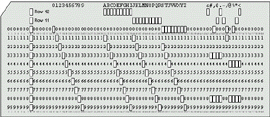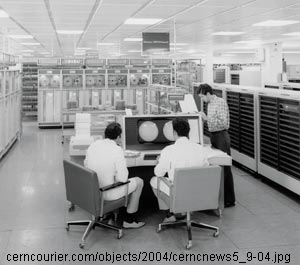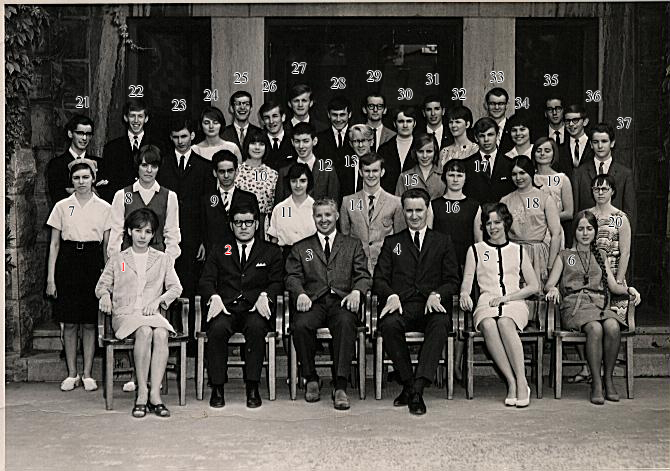Instituto Americano / CUSO [1968-1969]
After getting a B.A., I was fed up with school and wanted to see the World.
I had developed an interest in the Third World after hearing a chance lecture
at McGill. The Canadian University Service Overseas (CUSO) seemed like a good
opportunity to get involved. Plus it was a free ticket to an exotic place. I
was unqualified and really had no business being there. After two months of
intensive Spanish training in Moncton and Lima, I started teaching physics at
the Instituto Americano in La Paz, Bolivia.
I followed in the footsteps on one of the most inspiring persons I have ever
met. John Kierkegaard was just wrapping up his two-year stint with CUSO, and
was teaching me the ropes. He had a genius for designing and building laboratory
equipment with local materials. He built the student equipment for an entire
lab with a hand drill and other simple tools. He could blow glass and make a
Y-shape connector. Dribbling mercury in one branch, he would create an almost
perfect vacuum by connecting the other branch to a glass tube, then deftly seal
it shut with a propane flame. This was quite an achievement considering that
at 12,000 ft., the thin air barely supported combustion. With a filament pinched
at either end, the tubes made great 'neon' signs.
He synthesized bromine, poured it in a tube, then drew out the air to illustrate the rapid diffusion of a gas in a vacuum. He had a local crafstman hand-wind
forty transformers. This was actually cheaper than importing them. He was a tough act to follow, and I never rose to his standard.
 While in Bolivia in 1969, I wrote a school scheduling program on the IBM
1130 at the Universidad San Andres -- probably the highest university in the world.
While in Bolivia in 1969, I wrote a school scheduling program on the IBM
1130 at the Universidad San Andres -- probably the highest university in the world.
I got a copy of the Whole Earth Catalog and built a geodesic dome out of fence slats.

Maritime Life Assurance (1970-72)
 I first saw a Univac 9200 when I started working at Maritime Life Insurance, in Halifax, Nova Scotia.
I first saw a Univac 9200 when I started working at Maritime Life Insurance, in Halifax, Nova Scotia.
After spending two years in Bolivia with CUSO (Canadian Peace Corps), I had come to Halifax to meet my in-laws, intending to stay only two weeks. I had casually looked around for potential IT employers, and stumbled on an opening for an Assembler programmer. It was love at first sight.
The 9200 had a card reader, card punch, printer, and a bank of eight data lights and fifteen butterfly switches. That's it. No console, no monitor, no teletype. I learned to read hexadecimal with flash cards. See here (PDF) for more specs.
I arrived for my first day on the job just as they were hauling away old IBM 409 tabulators (with the oil pan on the floor), 083 sorters, and 052 duplicators.
 The lights-and-switch interface was like magic: you felt you were at the interstice between hardware and software. The Assembler listings had the machine code on the left, with the op codes and the operand addresses: you couldn't get much closer to the hardware without a soldering iron. And it just didn't get better than this: you could step through the code one instruction at a time, inspect the operands, and change the value of bytes in memory. The power! The rush!
The lights-and-switch interface was like magic: you felt you were at the interstice between hardware and software. The Assembler listings had the machine code on the left, with the op codes and the operand addresses: you couldn't get much closer to the hardware without a soldering iron. And it just didn't get better than this: you could step through the code one instruction at a time, inspect the operands, and change the value of bytes in memory. The power! The rush!
The Assembler was a primitive, two-pass system with a limit of four characters for variables and jump labels. Compiles could take 40 minutes or more, so in order to squeeze as many tests into one run, we would resort to patching the object decks with binary cards.
We had a 1001 card reader/collator, with two feeds and a combined speed of
2,000 cards/minute. What a racket it would make: picture a picker knife slamming
17 cards per second! When the cards jammed, it would create a mangled mess that
would take 10 or 20 minutes to repair, meticulously re-creating cards on the
keypunch, from shredded fragments. Sometimes the cards would get mashed up between
pinch rollers, and smoke would billow from the 1001.
 We ran out of room on the 80-column cards. In order to increase the storage capacity without adding more cards (which would have doubled the duration of the master file updates), I invented the 240-column card by dividing each column into three groups of four rows. The four rows corresponded to binary values of 0000 to 1001, or zero to nine. This was the seventies (7 = 0111), so the cards looked like lace doilies.
We ran out of room on the 80-column cards. In order to increase the storage capacity without adding more cards (which would have doubled the duration of the master file updates), I invented the 240-column card by dividing each column into three groups of four rows. The four rows corresponded to binary values of 0000 to 1001, or zero to nine. This was the seventies (7 = 0111), so the cards looked like lace doilies.
It was a big day when we switched from the Serial Punch (50 cards/min.) to the noisy Row Punch, 200 cards/minute.
Our master file was 40,000 records, which were stored in twenty trays of 2,000 cards each. The operators had to haul these heavy trays back and forth, twice a day, to perform the Master File update. They developed some pretty strong arms. You also had to be very careful not to put the cards out of sequence, or you would get the dreaded ‘sequence error' halt, with the binary lights lit up with the fatal message. That meant tediously flipping through the cards, manually looking for the place where an absent-minded operator had inserted a deck of cards in the wrong place, and re-do the Master File update, a two- to three-hour run.
 We also handled paper tape. We had just been bought out by John Hancock Insurance of Boston. They were sending us paper tape containing health insurance transactions. My boss was too proud to ask for the specifications, so we had to reverse engineer the format by analysing hundreds of spools of paper tape.
We also handled paper tape. We had just been bought out by John Hancock Insurance of Boston. They were sending us paper tape containing health insurance transactions. My boss was too proud to ask for the specifications, so we had to reverse engineer the format by analysing hundreds of spools of paper tape.
We finally got magnetic tape. Five units, 800 BPI. It was a tremendous improvement, both in speed and reliability. Watching a five-tape sort, with reverse reading, was a wondrous sight. The heat was exhausted in a jet of air blown through the top. A ping-pong ball could hover above the tape drive, suspended in mid-air like magic.
 I spent a lot of time, on week-ends, working alone in the computer room. One evening, prior to going into work, I had watched a Science-Fiction movie about a disc jockey who was alone in a radio station. It turns out this DJ had done some pretty bad things in his life, and had been relegated to a small, backwater station. As the show unfolds, he is trying to play some selections, but is being overridden with some spooky music. He gets annoyed, but does not catch the sinister tone of the unseen voice droning on about a sacrifice. Finally, he gets electrocuted on the power panel.
I spent a lot of time, on week-ends, working alone in the computer room. One evening, prior to going into work, I had watched a Science-Fiction movie about a disc jockey who was alone in a radio station. It turns out this DJ had done some pretty bad things in his life, and had been relegated to a small, backwater station. As the show unfolds, he is trying to play some selections, but is being overridden with some spooky music. He gets annoyed, but does not catch the sinister tone of the unseen voice droning on about a sacrifice. Finally, he gets electrocuted on the power panel.
OK, so it's midnight, I'm alone in the computer room, the five big tape drive vacuum motors are humming loudly. All of a sudden I hear a deafening snap! snap! snap! All the tapes have been unloaded, and the ends of the tapes are slapping against the read heads, spinning uncontrollably. Talk about being startled.
What happened is the power had flickered, causing the tape drive to commence dismounting the tapes. I had never seen this happen before. This had not been the best night to experience this phenomenon.
Another time, I was brand new at the job, and most concerned not to screw up. I'm alone in the computer room, when all of a sudden I hear a high-pitched whine. I thought for sure I had broken the computer. I turn it off in a panic, and race home hoping no one would notice. It turns out a Hollerith card had slipped in between two cabinets, and had gotten caught in cooling fan.
 I was always interested
in technology. One of my favourite toys was the school physics lab's oscilloscope.
I studied how each vowel, when spoken into a microphone, displayed a different
waveform. I photographed the patterns in an early attempt at voice recognition.
I was always interested
in technology. One of my favourite toys was the school physics lab's oscilloscope.
I studied how each vowel, when spoken into a microphone, displayed a different
waveform. I photographed the patterns in an early attempt at voice recognition. In 1966 I participated in a science fair with Michel Bouchard. We built a computer
with electric relays called ODEM (Ordinateur Digital Electro-Mecanique).
We salvaged sealed mercury relays, and aircraft switches from a scrap yard.
A mentor gave me the 24 volt power supply from a pinball machine. We had enough
relays for a dozen memory words of five bits each. ODEM could add and subtract
in two's-complement notation. We got an honorable mention.
In 1966 I participated in a science fair with Michel Bouchard. We built a computer
with electric relays called ODEM (Ordinateur Digital Electro-Mecanique).
We salvaged sealed mercury relays, and aircraft switches from a scrap yard.
A mentor gave me the 24 volt power supply from a pinball machine. We had enough
relays for a dozen memory words of five bits each. ODEM could add and subtract
in two's-complement notation. We got an honorable mention. My
first experience with computers was a FORTRAN course, on a
My
first experience with computers was a FORTRAN course, on a 
 While in Bolivia in 1969, I wrote a school scheduling program on the
While in Bolivia in 1969, I wrote a school scheduling program on the 

 I first saw a
I first saw a  The lights-and-switch interface was like magic: you felt you were at the interstice between hardware and software. The Assembler listings had the machine code on the left, with the op codes and the operand addresses: you couldn't get much closer to the hardware without a soldering iron. And it just didn't get better than this: you could step through the code one instruction at a time, inspect the operands, and change the value of bytes in memory. The power! The rush!
The lights-and-switch interface was like magic: you felt you were at the interstice between hardware and software. The Assembler listings had the machine code on the left, with the op codes and the operand addresses: you couldn't get much closer to the hardware without a soldering iron. And it just didn't get better than this: you could step through the code one instruction at a time, inspect the operands, and change the value of bytes in memory. The power! The rush!
 We ran out of room on the 80-column cards. In order to increase the storage capacity without adding more cards (which would have doubled the duration of the master file updates), I invented the 240-column card by dividing each column into three groups of four rows. The four rows corresponded to binary values of 0000 to 1001, or zero to nine. This was the seventies (7 = 0111), so the cards looked like lace doilies.
We ran out of room on the 80-column cards. In order to increase the storage capacity without adding more cards (which would have doubled the duration of the master file updates), I invented the 240-column card by dividing each column into three groups of four rows. The four rows corresponded to binary values of 0000 to 1001, or zero to nine. This was the seventies (7 = 0111), so the cards looked like lace doilies.
 We also handled paper tape. We had just been bought out by John Hancock Insurance of Boston. They were sending us paper tape containing health insurance transactions. My boss was too proud to ask for the specifications, so we had to reverse engineer the format by analysing hundreds of spools of paper tape.
We also handled paper tape. We had just been bought out by John Hancock Insurance of Boston. They were sending us paper tape containing health insurance transactions. My boss was too proud to ask for the specifications, so we had to reverse engineer the format by analysing hundreds of spools of paper tape.
 I spent a lot of time, on week-ends, working alone in the computer room. One evening, prior to going into work, I had watched a Science-Fiction movie about a disc jockey who was alone in a radio station. It turns out this DJ had done some pretty bad things in his life, and had been relegated to a small, backwater station. As the show unfolds, he is trying to play some selections, but is being overridden with some spooky music. He gets annoyed, but does not catch the sinister tone of the unseen voice droning on about a sacrifice. Finally, he gets electrocuted on the power panel.
I spent a lot of time, on week-ends, working alone in the computer room. One evening, prior to going into work, I had watched a Science-Fiction movie about a disc jockey who was alone in a radio station. It turns out this DJ had done some pretty bad things in his life, and had been relegated to a small, backwater station. As the show unfolds, he is trying to play some selections, but is being overridden with some spooky music. He gets annoyed, but does not catch the sinister tone of the unseen voice droning on about a sacrifice. Finally, he gets electrocuted on the power panel.